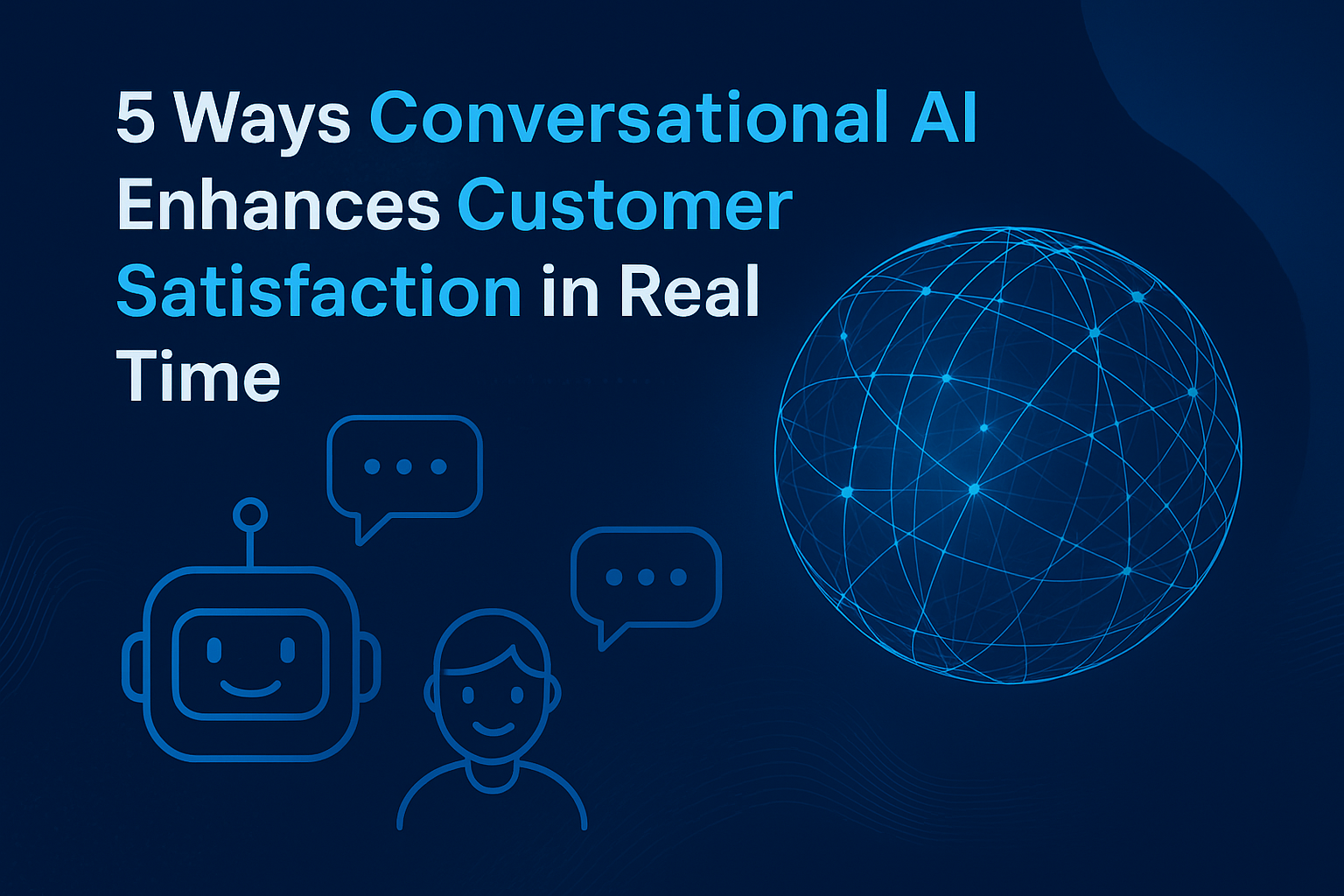
Why “real time” matters for CSAT
Customer expectations are at an all‑time high: more than half of customers will switch after just one poor experience, and nearly three‑quarters will switch after multiple bad ones. That raises the stakes for fast, accurate, first‑time resolutions across channels. At the same time, customers satisfaction needs transparency about AI. A global Salesforce study finds 72% of customers say it’s important to know if they’re communicating with an AI agent—useful guidance when you deploy AI in live service flows.
Below are five practical, real‑time ways conversational AI measurably improves customer satisfaction.
1) Instant answers, 24/7—without waiting in queue
Conversational AI (chatbots/virtual agents) gives customers immediate responses to routine questions at any hour—no hold music, no opening hours barrier. IBM notes AI chatbots “provide immediate answers…any time of day,” and mature adopters report 38% lower average inbound call handling time, a win for both speed and satisfaction.
Why it matters: faster first touch typically correlates with higher CSAT and lower frustration. When customers can self‑serve in seconds, escalation volumes drop and agents can spend more time on complex, high‑value cases.
2) Real‑time intent detection & smart routing = more first‑contact resolutions
Modern conversational AI doesn’t just parse words; it classifies intent (billing, returns, outage), urgency, and sometimes sentiment in real time then routes the case to the best resource (a specialized bot flow, the right knowledge article, or the right human queue). Vendors and practitioners consistently report lower AHT and higher FCR when AI triages and surfaces answers inside the conversation.
Why it matters: getting the customer to the right fix on the first try is one of the strongest positive drivers of CSAT (and repeat purchase behavior).
3) Personalization in the moment boosts satisfaction
Conversational AI can tailor replies using customer context (profile, history, locale) and live conversation signals. McKinsey finds effective personalization can lift revenues 5–15% and improve ROI 10–30%; faster‑growing companies derive more revenue from personalization than slower peers. In service, that translates to more relevant answers and less friction—right when customers need it.
Pro tip: align bot copy and agent prompts to customer tone and past interactions; personalize next‑best actions (e.g., warranty check, order status) directly inside the chat.
4) Proactive help through real‑time signals
With sentiment cues and pattern recognition, conversational AI can flag risk (confusion, frustration, compliance triggers) and escalate to a human at the right second—preventing a poor experience from becoming a churn event. Industry analyses show organizations using conversational intelligence report gains in customer satisfaction while reducing costs as repetitive work is automated—freeing agents for complex, empathy‑heavy issues.
Implementation tips: set thresholds for negative sentiment or repeated intents; surface an “offer human now” option; and be transparent that an AI is assisting (per Salesforce trust data).
5) Real‑time agent assist improves quality, consistency, and speed
AI can coach agents live with suggested answers, policy snippets, and next‑best actions based on what the customer just asked. The outcome: faster handle times, fewer transfers, and more consistent, compliant replies—all of which bolster CSAT. (Practitioner reports highlight reduced AHT, higher FCR, and stronger loyalty when AI handles repetitive steps and agents focus on high‑judgment work.)
Best practice: keep humans in control. Let agents accept/edit suggestions, and add a visible path for customers to switch to a human—again aligning with transparency expectations.
What the numbers say
- >50% of customers will switch after a single poor experience; 73% after multiple poor experiences.
- 72% want to know if they’re talking to an AI agent (be transparent in‑flow).
- AI chatbots provide immediate answers 24/7; mature adopters report 38% lower call handling time.
- Personalization can lift revenue 5–15% and increase marketing ROI 10–30% (a signal for service upsides too).
- Teams report lower AHT / higher FCR when AI automates repetitive steps and routes intents in real time.
How to roll out conversational AI with customer trust intact
- Disclose AI clearly in chat headers or hand‑off messages (meets the 72% transparency expectation).
- Design for hand‑offs: offer an easy “Talk to an agent” option and pass the full conversation context.
- Measure what customers feel: track CSAT by intent, first‑contact resolution, and re‑contact rates alongside AHT.
- Tune for personalization: use known context to answer faster and more precisely.
Conclusion
Conversational AI elevates customer satisfaction in the moment by doing five things exceptionally well: delivering instant answers 24/7, routing issues via real-time intent detection, personalizing responses with context, proactively preventing frustration through sentiment cues and smart handoffs, and assisting agents live for faster, more consistent resolutions. The common thread is speed with relevance—two levers that strongly correlate with higher CSAT and loyalty. Pair these capabilities with transparent AI disclosure, an easy “talk to a human” path, and rigorous measurement (CSAT by intent, FCR, AHT, deflection, and re-contact rates). Start small with a pilot, tune based on real conversations, and scale what measurably improves the customer’s experience. In short: use AI to remove friction, not to replace empathy—let machines handle the repetitive so humans can handle what matters.

